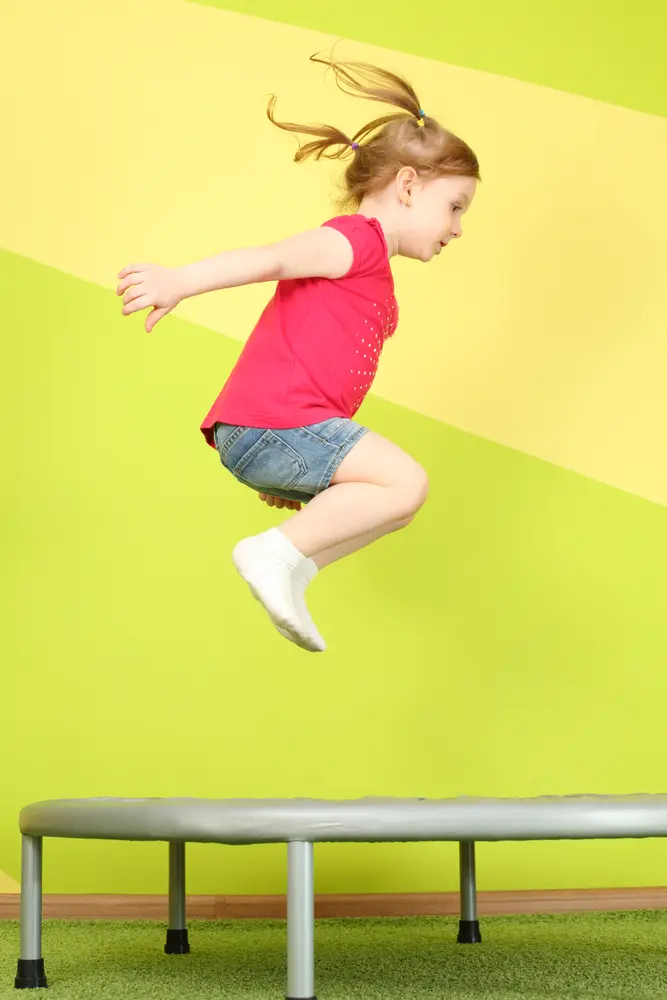So, what’s the deal with the trampoline in your office?
We’ve had a lot of visitors through our new location over the past few weeks and I think the #1 question we hear is some variation of “Why in the world would an Optometrist have a trampoline at their office?!” No doubt some wonder if…

We’ve had a lot of visitors through our new location over the past few weeks and I think the #1 question we hear is some variation of “Why in the world would an Optometrist have a trampoline at their office?!” No doubt some wonder if this is a legitimate tool.
Well, first off, let me say that it makes for much more enjoyable lunch hours and coffee breaks. In fact, I’d encourage almost any business to add a trampoline to their work space – who doesn’t like to feel like a kid again?
Joking aside, the REAL reason for having a trampoline is that it allows us to enhance sensory integration and vary the difficulty of visually-directed tasks. When we think about our general movements throughout the day, we typically operate in some combination of horizontal (x-plane “moving sideways”), directional (z-plane “moving forwards”) and vertical (y-plane “moving up and down”) directions. As discussed in a previous post, the demands on our visual system change EVERY time we make one of these movements. For children or adults with visual processing disorders or issues with ocular alignment, these changes in visual space can greatly impact their ability to acquire meaningful visual information.
In the therapy room we are able to mimic horizontal movements by having an individual or object of regard move sideways, and directional movements by having an individual or object move forward or backwards – but vertical movements are much harder to mimic. Hence, the trampoline. By having consistent, rhythmic movement in vertical space we can work on improving an array of visual acquisition skills. Whether your aim is to enhance ocular alignment, processing or visual-motor integration, the trampoline allows you to appropriately load a task and vary the difficulty level for those that you work with.
Most importantly though – it’s fun! We work with a wide variety of age groups here at the clinic and keeping them motivated and engaged for weekly, hour-long appointments takes a great deal of effort and diversity of activities. The trampoline affords us this diversity and is a wonderful tool for helping guide the development of visual function.
So, if you’re working in the vicinity of downtown Kelowna and looking to blow off a little steam on your lunch hour, stop by – I’m sure we could let you on for a bounce or two.
Until next month,
Paul Rollett, OD


